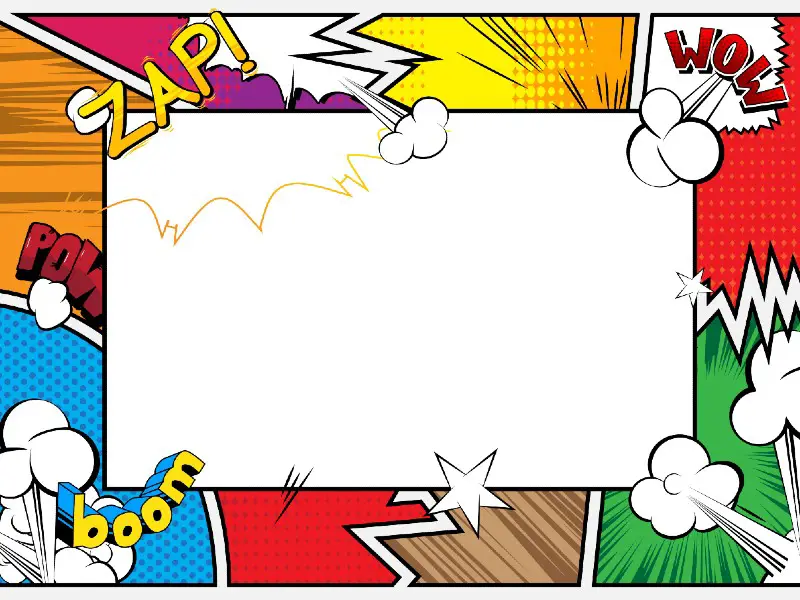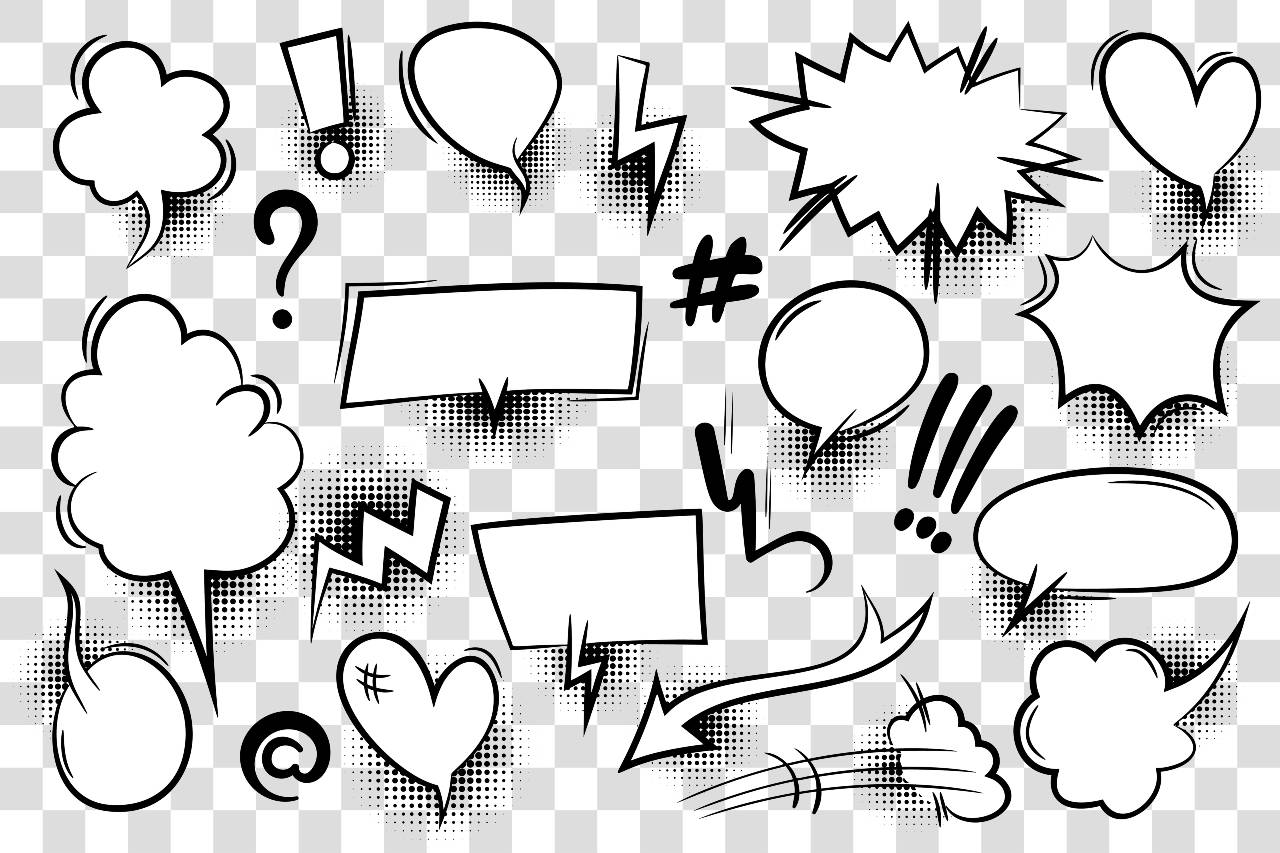Do you love comic books and comic style art? Have you always wanted to create a comic with your kids? If so, we have collected up some of the best and coolest comic book patterns for you, with lots of templates to fill in and play around with.These might give you some fantastic ideas for your own drawing, and they’re bound to be popular with kids, who will invent all sorts of characters and scenarios to go with them. They are a great way to get your kids thinking and creating and keep them quiet for a while. Some of these are aimed at older children and adults, while some would be suitable for a child just starting to dip their toes into the world of comic books. They are all good introductions to how comics work and the techniques that are used to make them effective.
1. Simple Pattern

Source: https://www.teachingideas.co.uk/art/comic-strip-templatesTo start with the basics, here’s a Simple Pattern that you can use to create a comic book page. This is perfect for getting your children engaged with the idea of drawing their own comic book, and showing them how they can fill in the rectangles, choosing the sequence, and telling a coherent story with their art.It has just six boxes, so it shouldn’t be too overwhelming, and you can always help out if necessary. Suggest that they put the writing at the top or bottom, and talk to them about how to use the box sizes to their advantage, and plan what will end up in the larger and smaller boxes.
2. Speech Bubbles
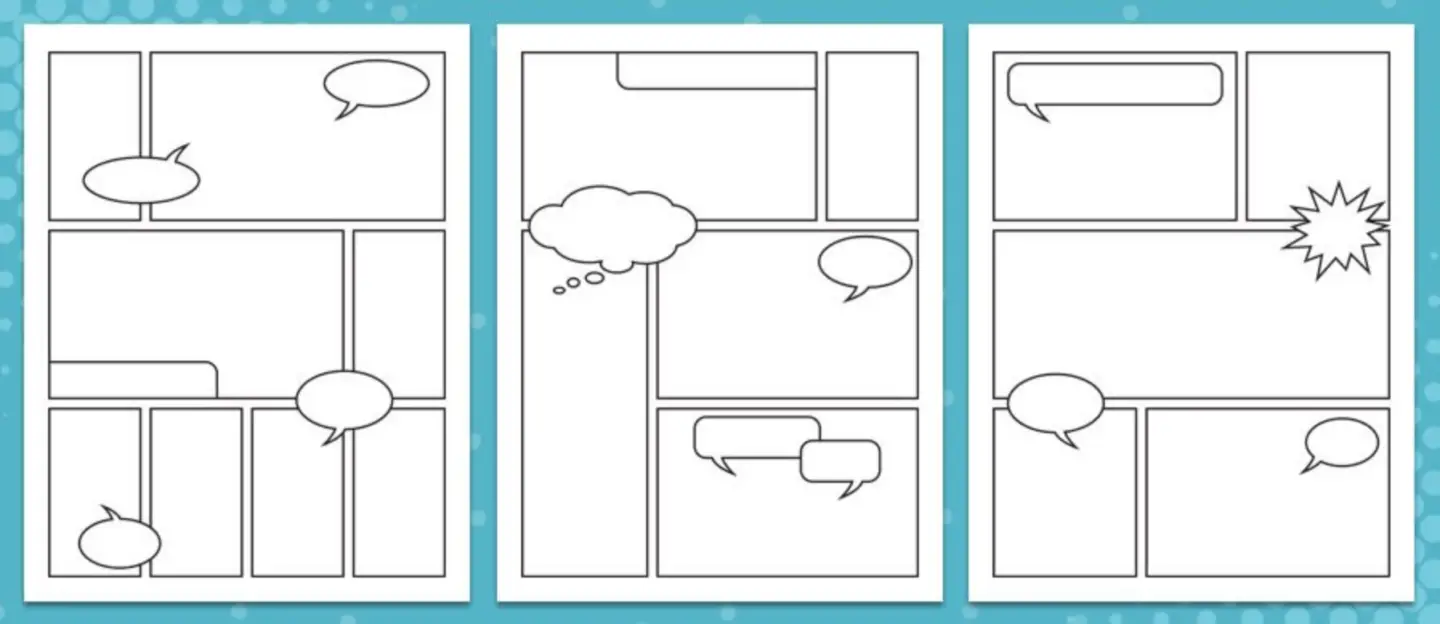
Source: https://medialoot.com/blog/free-printable-comic-strip-templates/If your child wants to practice Speech Bubbles, this is the perfect pattern for them. They can spend some time filling in the bubbles and learning how to write dialogue for their characters, and they will also spend some time thinking about how the different shapes convey different meanings.For example, ask them to tell you how the spiky bubble “sounds” compared with the rounded bubble. Talk to them about capitals and how to represent shouting or whispering. This is a great exercise to do with children who love comic books.
3. Filled Speech Bubbles
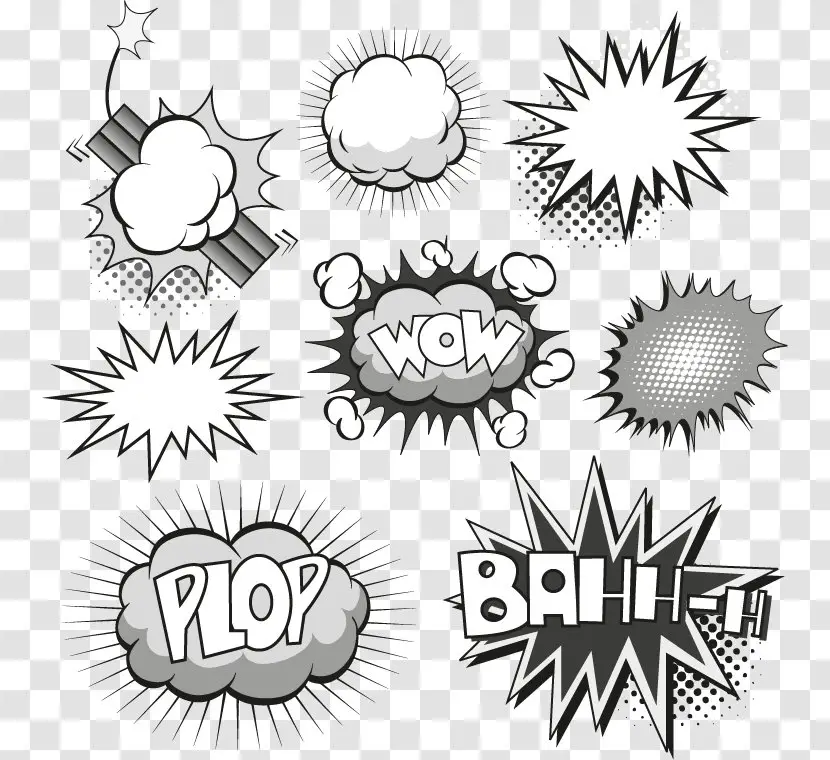
Source: https://pnghut.com/png/7mv2DKbBRk/comic-book-comics-royalty-free-cartoon-explosion-clouds-and-patterns-painted-transparent-pngFor kids who need a little more help, these Filled Speech Bubbles might be ideal. They are all different shapes and represent different sounds, but many of them have the word already written in.Your child might enjoy choosing some colors to suit the word, or thinking up synonyms for the word that they could use instead. There are also some bubbles they can fill in once they’re starting to get the idea and feeling inspired by the pictures.
4. Background Patterns
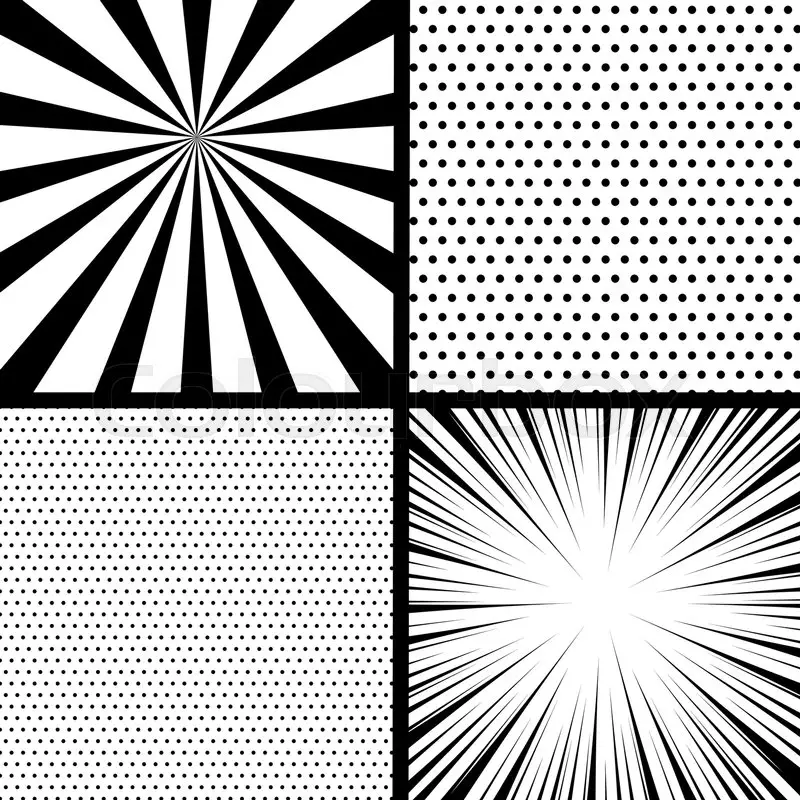
Source: https://www.colourbox.com/vector/comic-book-pop-art-monochrome-mock-up-vector-29802138These Background Patterns are a great way to get your child thinking about what goes behind characters and what effect that has. Younger children may enjoy coloring the patterns, while older ones might want to use them as a guide and recreate the shapes and styles on plain paper.Again, this will help them to think about what effect the shapes have and how they tell the reader what is going on without any words. Help them experiment with different line thicknesses, points, and angles in order to make the most of these patterns.
5. Complicated Background Patterns
 Source: https://www.dreamstime.com/illustration/manga-patterns.htmlIf the previous ones were a bit too simple, these Complicated Background Patterns might be perfect. Get your child to spend some time adding a character or object to each, and discuss how the positioning and angle make a difference to the atmosphere.Get them to choose some colors and practice shading on the templates, or they may wish to have a go at recreating them on their own comic pages.
Source: https://www.dreamstime.com/illustration/manga-patterns.htmlIf the previous ones were a bit too simple, these Complicated Background Patterns might be perfect. Get your child to spend some time adding a character or object to each, and discuss how the positioning and angle make a difference to the atmosphere.Get them to choose some colors and practice shading on the templates, or they may wish to have a go at recreating them on their own comic pages.
6. Strips With Speech Bubbles
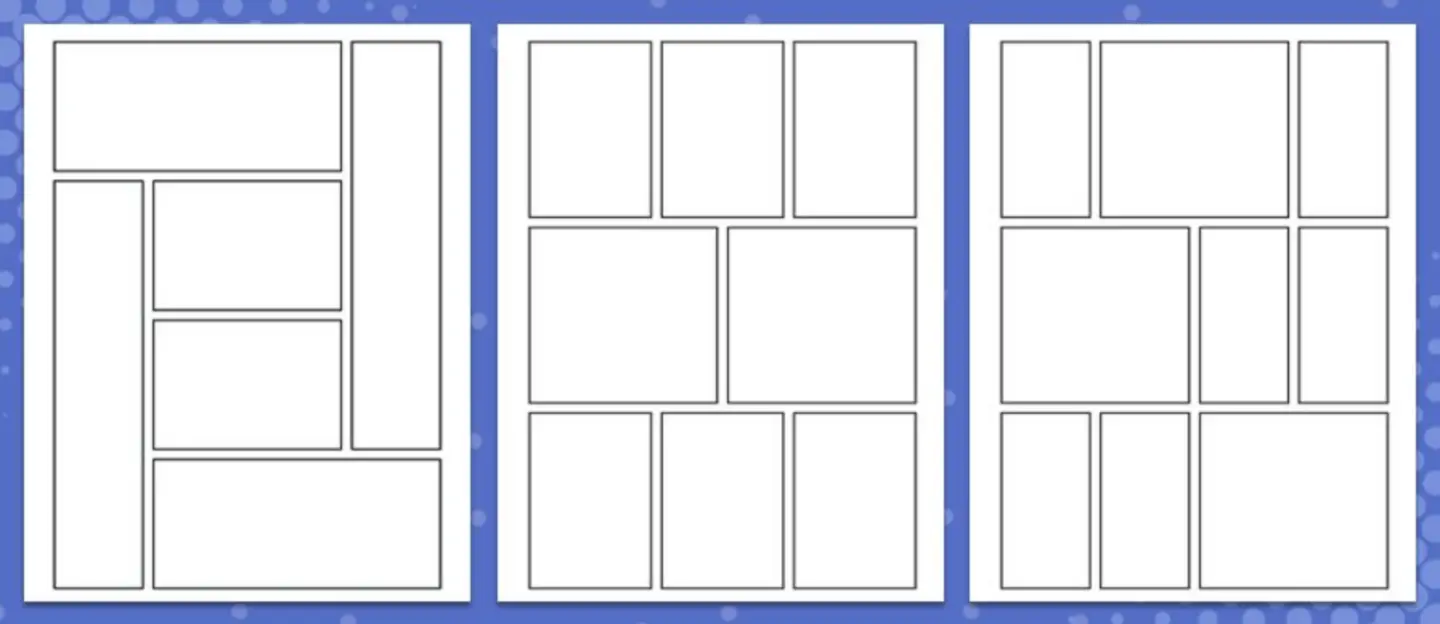
Source: https://medialoot.com/blog/free-printable-comic-strip-templates/Once your child is taking an interest in incorporating speech in their comic, these Strips With Speech Bubbles are a great idea. It does limit the child a bit in that they’ll have to put speech or thoughts in specific places, but this can actually be a great way to help them problem-solve and think hard about the story they want to tell. It’s also good practice for using the correct kind of bubble, such as puffy clouds for thought.
7. Text
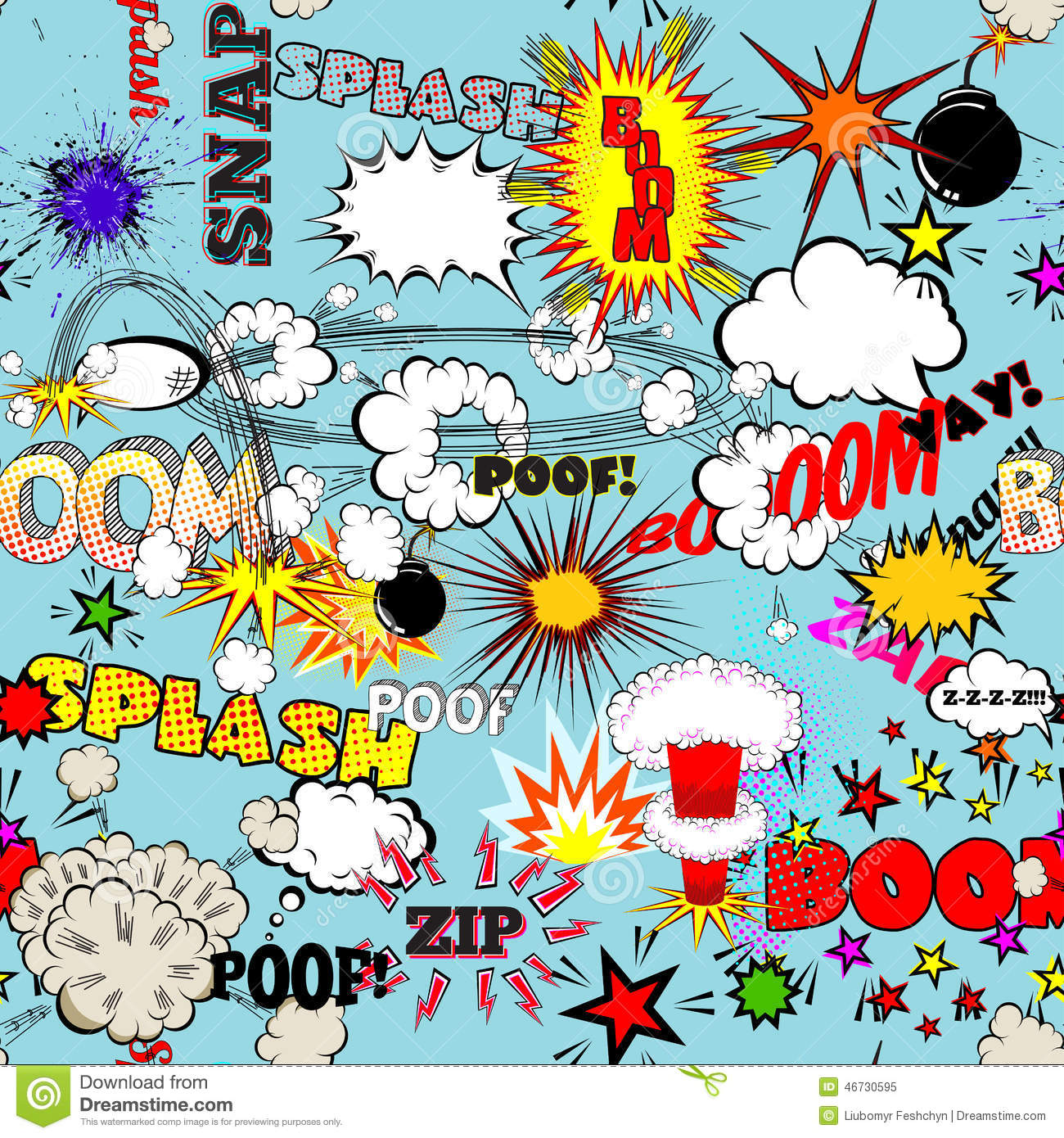
Source: https://www.dreamstime.com/stock-illustration-vector-retro-seamless-pattern-comic-speech-bubbles-labels-logos-comic-book-words-comics-image46730595You could print this Text page in black and white to make a coloring page for your child, or encourage them to copy and explore the different texts used for different effects. This is a really creative pattern with so many different techniques to explore.Discuss how the words go through objects and other things happening in the scene, and how you can surround a word with stars or clouds to emphasize the noise it makes. Get your child to think about color use, lettering, shapes, arrows, explosions, etc.Comic books make use of so many techniques to convey the noise and atmosphere, and a lot of this is done through how letters appear on the page.
8. Dot Pattern

Source: https://www.zazzle.ca/comic_book_style_dot_pattern_black_and_white_cloth_napkin-185032917804573377?CMPN=shareicon&lang=en&social=trueThe Dot Pattern is used a lot in comics and is a great way to convey shading and mix colors without having to spend hours on them. Get your child to think about the effect of this and how it can make images “pop” without having to spend hours shading them.Your child may like to color in the pattern or have a go at recreating the effect with two colors on a plain sheet of paper. It may be easiest if they color the page, and then fill in the dots on top of the coloring.
9. Longer Pattern
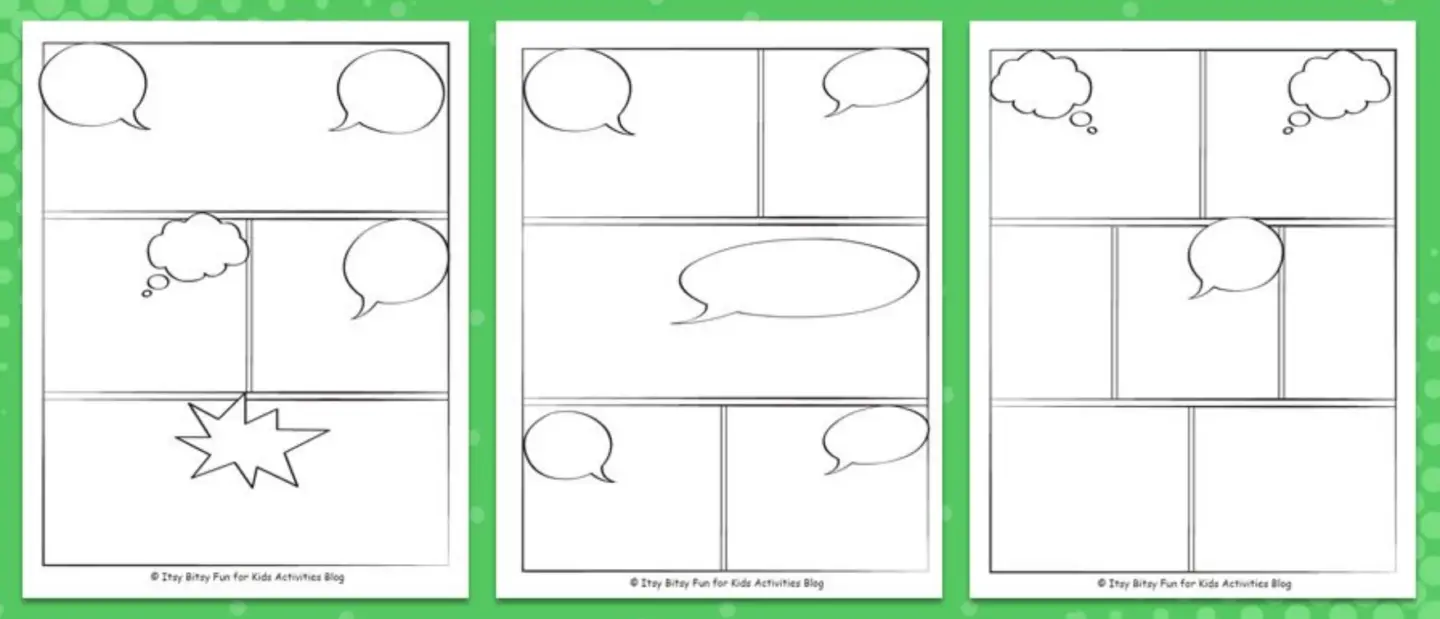
Source: https://medialoot.com/blog/free-printable-comic-strip-templates/If your child is getting into the storytelling aspect, this Longer Pattern template is perfect for them to try their hand at telling a short adventure. It offers different sizes and even one overlapping panel, so they can start to get a feel for the somewhat eclectic style of comic books.This is a great one for children who are still starting because it gives them simple squares to play with, but it does encourage them to think about sizing and how those squares might encroach on the space of others.They will also need to think about sequencing, particularly on the last page, where they will need to consider what order to draw the panels in. Encourage them to think about this in advance so they don’t end up with things in the wrong order ““ but they can always add numbers if it gets confusing.
10. Irregular Pattern

Source: https://slidemodel.com/templates/color-comic-book-toolkit-for-powerpoint/comic-book-background-with-patterns/For aspiring comic book artists that are starting to gain confidence and would like a bit more of a challenge, this Irregular Pattern would be perfect. It will really challenge the artist to think about the shape of their comic drawings, and how to fit in everything that they would like to show.The top two panels in particular may present a challenge because they don’t have a flat base to work from. Again, it will be important for your child to think about sequencing and how to show everything that they want to in this more confined space.This is probably good for an older child, or as an exercise to move onto, but don’t worry if a younger child wants to do it ““ they can have fun, even if it doesn’t turn out perfectly.
11. Complicated Irregular Pattern
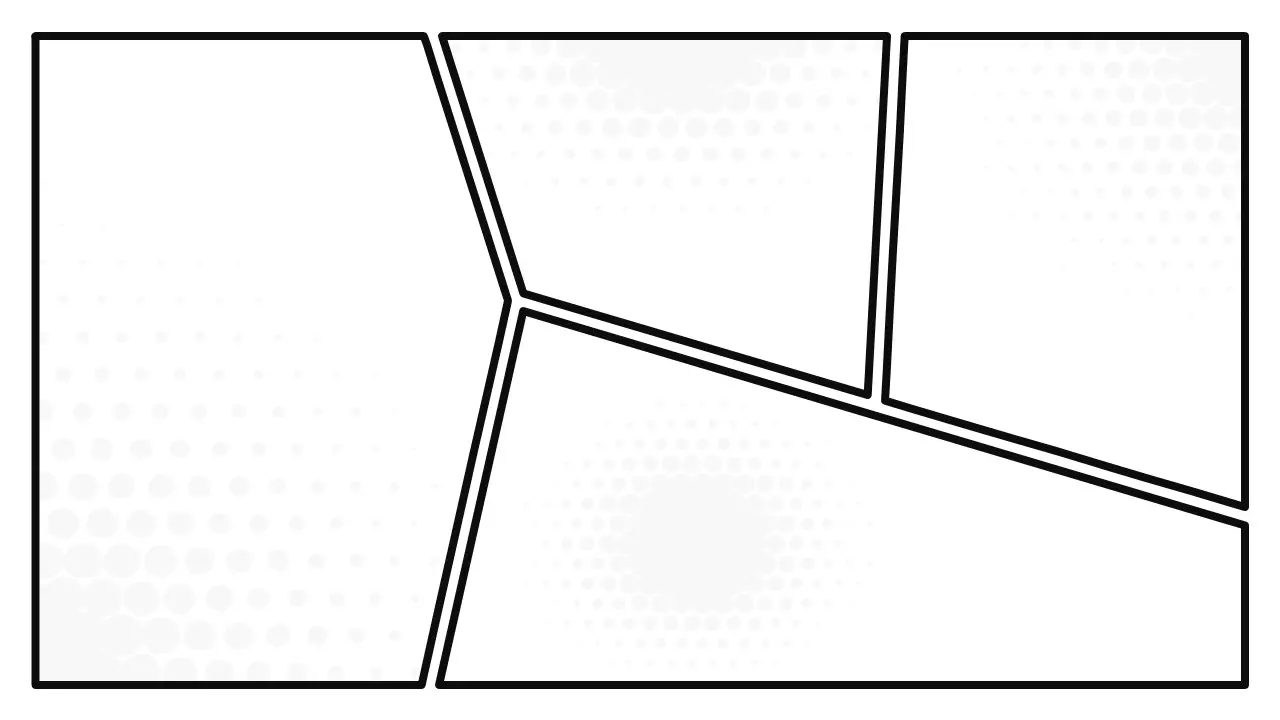
Source: https://slidemodel.com/templates/black-and-white-comic-layout-powerpoint-template/If the above option wasn’t challenging enough, this Complicated Irregular Pattern is really increasing the difficulty level. With the jagged shape leading down from the first panel, the artist will have to think hard about what to draw in both, and how to make use of that space.Encourage them to think about the effect of drawing panels like this, and how it changes the mood of the comic, especially when compared with square rectangles. It may be interesting to draw the same scenes in both templates, and see how they “feel” different to the reader.
12. Filled In Pattern
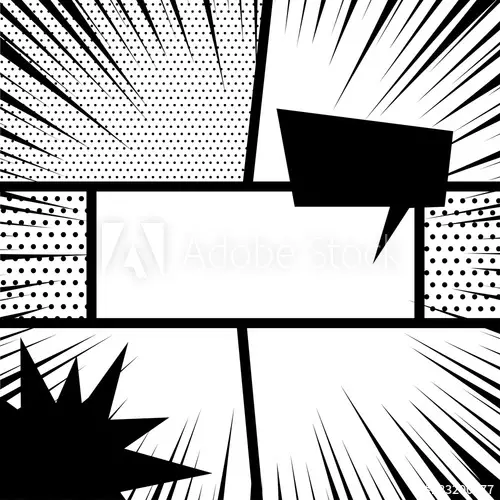
Source: https://stock.adobe.com/images/pop-art-black-white-empty-backdrop-mock-up-vector-illustration-halftone-dot-mockup-for-comic-text-silhouette-boom-explosion-speech-bubble-balloon-comics-book-monochrome-template-background/183200177This Filled In Pattern is also great for a child exploring the atmosphere of comics, but it presents a very different kind of challenge. Instead of altering the shape, it alters the background, meaning the artist will have to think hard about the feeling of each box before they start to fill it in.Consider how the dots and spikes change the atmosphere, and how they can be best utilized. For some, this sort of scene might feel restrictive. For others, it will inspire creativity and also promote careful thought about the effect of the backgrounds.You may want to white out the speech bubbles before printing, or you could stick some white paper over them if you don’t have a white pen to write with.
Conclusion
You should now have some great ideas for writing a comic book ““ either alone or with your child ““ and how you can play with the different drawing techniques that are used. Comics are an incredibly versatile art, and they use sophisticated techniques to convey much of their meaning through pictures, rather than words. This makes them great for children to play around with.They are a good way to explore narrative and the art of storytelling, especially with children who get overwhelmed by traditional stories.
Comments
0 comments

